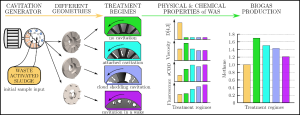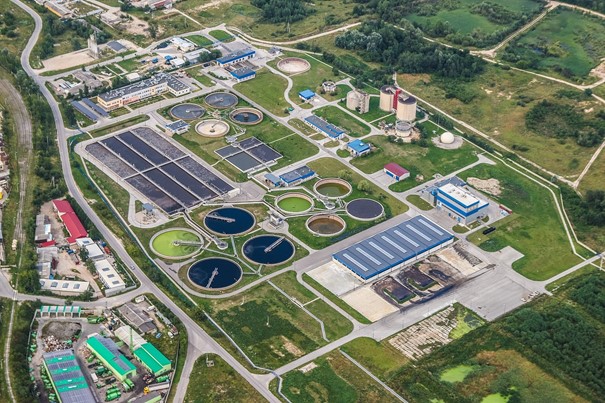Researchers from the Laboratory for Hydraulic Machines have shown in collaboration with the Faculty of Civil and Geodetic Engineering and the National Institute of Chemistry, that methane production from waste activated sludge (WAS) can be increased through the smart use of hydrodynamic cavitation. The study is significant in that it focuses on the waste-to-energy approach and explores how unwanted WAS that is produced in large quantities daily at wastewater treatment plants around the world can be used as a source rather than seen as a byproduct. This very issue is also addressed inside the ERC PoC project CAVIPHY, which runs from 01 August 2022 to 01 January 2024 and is funded by the European Commission. The study was published in a high-ranking Journal of Environmental Management (IF: 8.7).

Figure 1: Graphical presentation of the research study
In this study, a continuation of their earlier work in which they have already established that hydrodynamic cavitation generated in in-house developed rotational generators can be used as a pre-treatment method for WAS prior to anaerobic digestion. This study have shown that by manipulating the conditions in the cavitation chamber, methane production can be further increased. The effects of three different cavitation and one non-cavitating regime were studied in detail and discussed in terms of the physical and chemical properties of the treated sludge samples.
It was found that particle size always decreased by up to 92 %, specific surface area increased by up to 611 %, while viscosity increased only for the treatment without cavitation. Chemical changes were more pronounced in cavitating regimes, where soluble chemical oxygen demand increased by up to 175 %. Biochemical methane potential increased for all treatments (by up to 70%), with the best energy balance determined for regime with a 43 % increase in biochemical methane potential. The main conclusions of the study are that the compounds released by disintegration of WAS flocs cannot be directly correlated with methane production as previously thought and that viscosity may play an important role in anaerobic digestion.
Article is available at: https://doi.org/10.1016/j.jenvman.2023.119074
